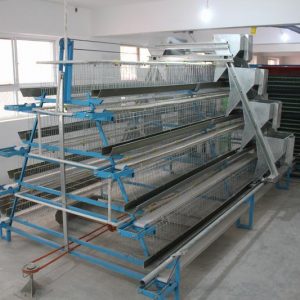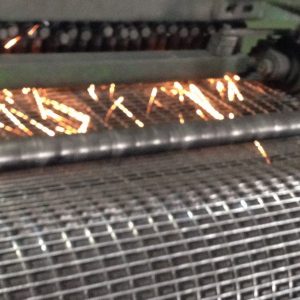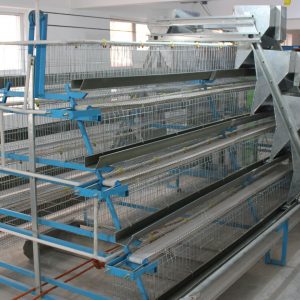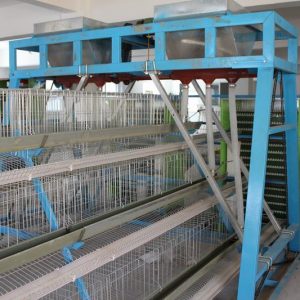
Main points of grazing laying hen nutrition control
Breeding of laying hens requires more nutritional energy. During the grazing period, farmers must provide sufficient nutrition for laying hens to ensure the daily energy consumption of laying hens.
Research shows that adopting nutritional regulation to reduce the aggressive behavior of hens will increase the daily egg production and survival rate of hens by at least 10%. According to conservative calculations of current market prices, dietary control measures can increase the profit of laying hens by at least 20%; therefore, nutritional control measures should also be taken into account when formulating management strategies for grazing laying hens.
1. Is energy used for production or stress?
Chickens with poor welfare levels will use more energy to respond to stress factors, thereby reducing the energy that is ultimately converted into production performance. Because of the large amount of activity of grazing chickens (Lomu et al., 2004), chickens have a higher demand for dietary energy, which requires satisfying these activities by providing more dietary energy to the chickens or consuming some of the energy for production.
Second, adjust crude protein in diet to reduce feather pecking behavior
The egg consumption of grazing chickens in Europe is gradually increasing, and grazing broilers and organic broilers are also very marketable. The European requirement for grazing chickens is to leave chickens with access to outdoor vegetation. This raises a nutritional issue, and the dietary supply must match the nutritional needs. On the other hand, grazing poultry outdoors is plagued by many factors, such as the quantity and quality of nutrients ingested from pasture. The nutrients that pastures can provide chickens are very limited, just some cellulose and vitamins. Chickens can get some protein by eating insects, but if animal protein is not added to the diet, it is difficult to determine whether the chicken has obtained a sufficient amount of high-quality protein.
The impact of dietary protein on feather pecking behavior may be due to insufficient supply of protein or specific amino acids, or depending on the type of protein being fed. Feeding low-protein diets and excess plant protein may result in insufficient protein intake or low protein supply. Related pecking behaviors have a high incidence in grazing laying hens. Protein deficiency is closely related to feather pecking behavior (Ambrosserl and Petersen, 1997). The protein intake is lower than that required for chickens than for high-protein diets. The mortality rate of chicken pecking feathers is high. In addition, chicken feathers with insufficient intake of dietary amino acids do not develop well and are prone to feather pecking. In fact, chickens with unsatisfactory amino acid supply peck feathers and the resulting mortality rate is higher (vanKrimpen et al., 2005).
Although farming experience shows that feeding too much plant protein will increase the incidence of pecking, there is no experimental data to support it. A study conducted by Richter and Hartrag (2003) showed that chickens fed only plant protein had a higher mortality rate than those fed animal protein. McKeegarn et al. (2001) observed that backup hens fed with plant protein had a higher incidence of feather pecking than chickens fed fishmeal. Obviously, when feeding hens with different levels or types of protein, there are many factors that cause inconsistent feather pecking behavior and production response, including chicken breeds, diet types and test conditions. However, the above studies provide solid evidence that feather pecking behavior is affected by dietary protein supply.
3. Effect of dietary fiber on chicken pecking behavior
Esnail (1997) research shows that there is a direct relationship between dietary fiber content and the incidence of feather pecking and related mortality. Generally, the incidence of feather pecking decreases with increasing dietary fiber levels. Insoluble fibers seem to play a particularly important role in indirectly changing the behavior of chickens. Insoluble fibers are nutritional diluents. They have no effect on the nutrition of chickens, but they play a rapid role in filling the intestines of chickens. Therefore, when chickens eat a diet rich in insoluble fiber, they spend longer time on feeding, thereby reducing the problem of feather pecking: Huber-Eicher and wechsler (1998) think that chickens spend money on foraging It takes a long time. The behavior of pecking other chickens will be reduced. Hartinl et al. (2002) believed that dietary non-joke fiber reduced the pecking and pecking behavior of laying hens, which indicates that non-joke fiber is an important dietary regulation measure to solve the feather pecking behavior. Harci et al. (2003) confirmed that feeding high-fibre diets to laying hens reduced the incidence of “off-slot” and increased feeding activity.
Although there may be no simple answer to the question of how dietary fiber affects behavior, due to the need for balanced nutrition, high levels of fiber in the diet will force chickens to spend more time eating to meet energy requirements. Studies have shown that when laying hens eat a diet containing high levels of fiber, the mortality associated with feather pecking decreases. It is feasible to provide chickens with sufficient protein and high levels of fiber, because the animals will eat until they meet their needs. However, the need for fiber must also be balanced with other nutrients.
Fourth, formulate a nutrition plan can improve profitability
As mentioned earlier, low welfare levels increase animal metabolic energy and thus shift energy from production to stress. For example, the G1atz (2001) study found that hens with poor feather scores (one of the results of aggressive feather peck behavior) would consume 16% more feed and decrease egg production. Through a series of studies, Harcini et al. (2003) explained how dietary fiber affects the production performance of laying hens. Figure 3 shows that the high-fiber diets of laying hens have reduced mortality, increased survival rate and increased daily egg production of hens. Obviously, increased survival rate (decreased mortality rate) and increased daily egg production indicate profitability Increase in level.
By observing the impact of laying hen breeding behavior on production performance, four scenarios are envisaged (see Table 1). In short, feather pecking and related pecking behavior will affect the profitability of grazing laying hen breeding farms. Take a farm with 300 grazing layer hens as an example, the cost and benefit are calculated according to the market price. Scenario 1 is a farm with a high level of welfare. It is assumed that the farm does not have the problem of feather pecking and does not need to be controlled by dietary control measures. The profitability of the farm is good. In Scenario 2, feather pecking has caused some chickens’ feathers to deteriorate, and feather pecking has become a serious problem. However, despite the increase in feed costs, egg production has not been affected. However, in Scenario 2, the profit margin decreased by 18% only due to the increase in feed cost.
If, as described in Scenario 3, feather pecking increases feed costs and mortality, coupled with poor sales progress in the egg product market, even if it is assumed that labor costs are reduced due to a reduction in the number of chickens, then the profit in this case will be higher than the first The situation fell 57%. Scenario 4 uses a nutrition strategy to successfully reduce feed consumption by 5% (compared to Scenario 1) and increases egg production by 2%, thus increasing profit by 20% compared to Scenario 1.
The above accounting data shows that nutrition strategies can increase the breeding profit of grazing laying hens. The increase in profit is due to the decrease in feed intake, which plays an important role in the total production cost. As shown in Figure 1, when any factor affects the welfare of the flock, the nutritional requirements of the chicken will increase. This increase will be met either by increasing nutrient intake or by reducing egg production. In any scenario, the production cost will increase and result in a decrease in profits. Therefore, reducing production costs can increase the profitability of grazing poultry.
V. Improving animal welfare means increasing profitability
Laying hens have many reasons for pecking, and there are more than one solution. However, there is no doubt that nutritional factors can be used as a way to solve the problem, and adjusting the protein and cellulose levels of the diet can solve the problem of feather pecking. Animal welfare includes both physical and psychological aspects. A balanced diet and sufficient water can protect animals from hunger and thirst. In addition, the correct nutrition supply is very important for the ideal production performance and weight maintenance. Reasonable nutrition can improve immunity and reduce the chance of infection.
Sustainable nutrition programs must also consider social benefits, such as providing humans with safe and nutritious food, and livestock production does not affect the environment. In addition, it is necessary to formulate highly applicable methods in harmony with the environment to effectively promote and encourage innovation. According to the FAo report, some examples show that increasing welfare levels will reduce profits, but on the other hand, some regulatory measures can increase profits, and these should be given priority. In order to better improve animal welfare through nutritional measures, it is necessary to work with governments and relevant organizations, professional groups, scientists, technicians and industries to help farmers develop better nutrition programs.



